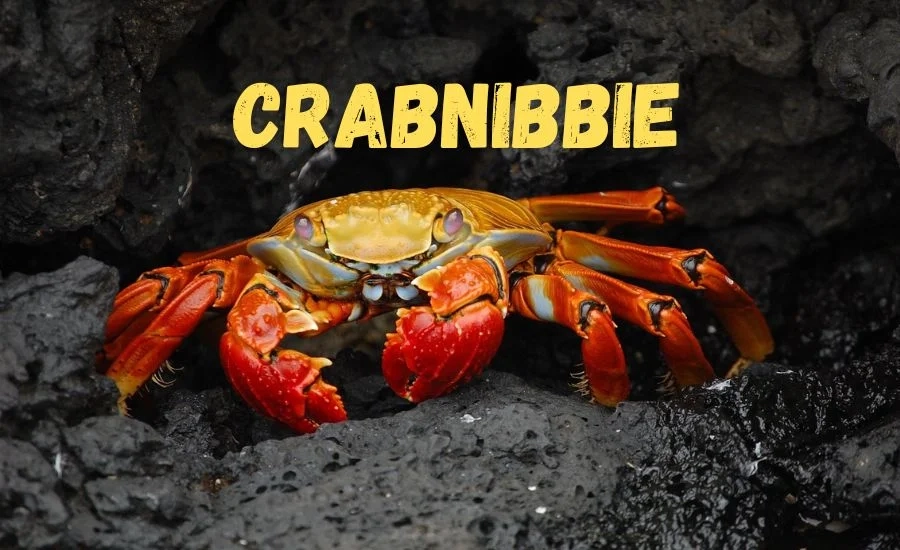Intro
Welcome to the captivating world of Crabnibbie! This little-known creature is a hidden gem of nature, intriguing scientists and animal enthusiasts alike. With its quirky behaviors and distinctive features, the Crabnibbie invites you to explore an ecosystem that remains largely undiscovered. Whether you’re a seasoned marine biologist or simply curious about the wonders beneath the waves, this post will take you on an unforgettable journey into the life of one remarkable animal. Dive in with us as we unveil what makes the Crabnibbie so unique!
Physical Characteristics and Habitat of Crabnibbie
The Crabnibbie is a striking creature, easily recognized by its vibrant shell adorned with intricate patterns. Its body features unique appendages that allow it to navigate rocky terrains and sandy shores with agility.
Measuring about six inches across, the Crabnibbie boasts strong pincers used for both defense and foraging. These claws are not only functional but also add to its distinctive appearance.
Habitat-wise, this fascinating animal thrives in coastal regions, often found among tide pools or under rocky overhangs. They prefer environments rich in algae and small crustaceans.
Temperature fluctuations play a role in their habitat selection as Crabnibbies seek out stable conditions to survive. These locations provide ample food sources while offering protection from predators lurking nearby.
The Evolutionary History of Crabnibbie
The evolutionary history of the crabnibbie is a fascinating journey through time. This unique creature belongs to a lineage that dates back millions of years, showcasing remarkable adaptations.
Crabnibbies have evolved from ancient crustaceans, adapting to their environments in extraordinary ways. Fossil evidence suggests they thrived alongside dinosaurs, demonstrating resilience during significant ecological shifts.
Their distinct physical traits reflect survival strategies developed over generations. The ability to camouflage and burrow into sandy substrates has proven crucial for evading predators while hunting for food.
Genetic studies reveal intriguing connections between crabnibbies and other marine species. These relationships highlight how shared ancestry influences behavior and habitat preferences in modern ecosystems.
As climate changes impact habitats globally, understanding this evolutionary background becomes essential for conservation efforts aimed at preserving these remarkable creatures. Their story not only enriches our knowledge of biodiversity but also emphasizes the importance of protecting marine life.
Diet and Feeding Habits of Crabnibbie
Crabnibbies are fascinating creatures with a diverse diet. They primarily feed on algae, small crustaceans, and organic detritus found on the ocean floor. This varied diet allows them to thrive in different habitats.
These animals have adapted unique feeding techniques. Using their specialized pincers, they efficiently scrape algae from rocks and coral surfaces. This method not only provides nourishment but also helps maintain the health of their environment.
Interestingly, crabnibbies exhibit opportunistic feeding behavior. When food is scarce, they do not hesitate to scavenge leftovers from other marine species. This adaptability ensures that they can survive even in challenging conditions.
Their dietary habits play a crucial role in shaping the ecosystems they inhabit. By consuming decomposing materials and algae, crabnibbies contribute to nutrient cycling within their environments.
Social Behavior and Communication of Crabnibbie
Crabnibbies exhibit fascinating social dynamics that set them apart from other crustaceans. They thrive in groups, showcasing a unique hierarchy within their communities. This structure helps maintain order and reduces conflict over resources.
Communication plays a crucial role in their interactions. Crabnibbies use a mix of body language and subtle color changes to convey messages. For instance, when threatened, they might display brighter colors as a warning signal to others nearby.
Vocalizations also contribute to their social life. While not loud, these sounds help establish territory or attract mates. Their calls can resonate through the water, creating a network of information shared among fellow crabnibbies.
Such intricate behaviors highlight their intelligence and adaptability in ever-changing environments. Observing these creatures reveals just how complex their social lives truly are.
Threats and Conservation Efforts for Crabnibbie
Crabnibbies face numerous threats in their natural habitat. Climate change poses a significant risk, altering sea temperatures and affecting marine ecosystems. These changes can disrupt the delicate balance Crabnibbies rely on for survival.
Pollution is another critical challenge. Coastal waters often suffer from runoff filled with harmful chemicals that impact food sources and breeding grounds. The health of these environments directly influences Crabnibbie populations.
Conservation efforts are underway to protect this unique species. Organizations are working tirelessly to monitor habitats and establish marine protected areas. Public awareness campaigns also aim to educate communities about the importance of preserving these creatures.
Research plays a key role in understanding Crabnibbie behavior and ecology, helping inform better conservation strategies. Collaborations between scientists, local governments, and environmental groups foster hope for the future of this enchanting animal amidst growing threats.
Final Remarks
The world of the crabnibbie is indeed a captivating one. This unique creature, with its vibrant colors and distinctive physical traits, adds an intriguing layer to our understanding of marine biodiversity. Its specialized habitat reflects how perfectly adapted it is to thrive in specific environments, showcasing nature’s ingenuity.
Delving into the evolutionary history reveals a story rich with adaptation and survival strategies that have allowed the crabnibbie to flourish over time. Its diet highlights its role within the ecosystem, emphasizing both predation and scavenging behaviors that balance nutrient cycling in its habitat.
Social interactions among crabnibbies paint a picture of complex communication methods essential for their survival. Observing these behaviors offers insights into their social structures and cooperative tendencies, enriching our appreciation for such creatures.
However, threats like pollution and habitat loss loom large over their future. Conservation efforts are crucial not just for the crabnibbie but also for maintaining ecological balance across marine environments.
These enchanting animals remind us of nature’s wonders waiting to be explored further. Understanding and protecting them ensures that this fascinating segment of life continues to thrive in our oceans for generations to come.

